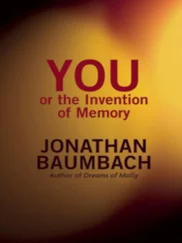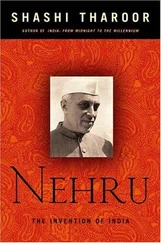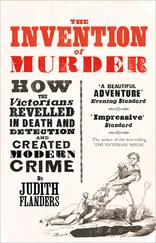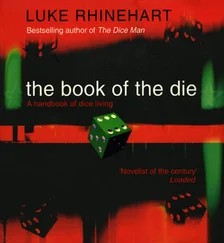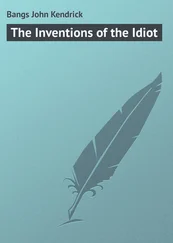Lewis listed some 70 traits characterizing this “design for living” of the poor that stressed “the inexorable repetitiousness and the iron entrenchment of their lifeways.” Among these traits, “the low level of organization,” “the disengagement from the larger society,” and “hostility to [its] basic institutions,” including the police, seemed to fit well poor blacks then rioting in American cities from coast to coast. 19But the thesis that the latter obey a distinctive life design perpetuating their dispossession seemed to disregard material forces keeping them down and to make (hyper)ghetto residents responsible for their own parlous fate – what the psychologist William Ryan would later call “blaming the victim” in his cutting critique of the Moynihan report and assorted middle-class nostrums deployed in denial of the realities of caste and class. 20
As a result, the “culture of poverty” became the epicenter of a second venomous debate among social researchers, much as the “tangle of pathology” fixated discussion among policy-oriented scholars. These two notions worked in tandem to fasten attention on the internal properties of the (hyper) ghetto and its inhabitants, effectively obscuring the web of external relations linking the latter to the broader structure of the city, the economy, and the state. In particular, these two notions obfuscated the continuing significance of caste as an active principle of social vision and division bisecting social and physical space in the metropolis. Myrdal’s “underclass” did not enter into the academic, journalistic, and policy vocabulary because it went against the grain of both rival notions: “tangle of pathology” consecrated race over class, but race construed as a substantialist property as opposed to a relational construct; 21“culture of poverty” prioritized culture over structure. Class receded into the background of both scholarly-policy disputes; the state as generator of marginality all but vanished.
But the “underclass” did not disappear so much as go underground, and it gained currency a decade later among philanthropic foundations. The latter seized on the notion as the rhetorical device ideally suited to relegitimizing their action in the face of the alleged failure of the “War on Poverty” to ameliorate conditions in the inner city. The “underclass” identified for them a new target population seemingly impervious to traditional means of poverty remediation and therefore requiring a renewed enterprise in observation and intervention. Two decades later, a senior staff member of the Rockefeller Foundation in charge of the “underclass” program under the aegis of the foundation’s Equal Opportunity Division, would confide to sociologist Herbert Gans that “poverty didn’t sell” anymore whereas “underclass” was an “energizing” term. 22
The key role here was played by Mitchell Sviridoff, the Vice-President for national affairs at the Ford Foundation and later a professor of urban policy at the New School for Social Research. As early as 1966, Sviridoff provided a large grant to launch and support the Vera Institute of Justice to carry out “demonstration projects in the field of criminal justice and the underclass” – the first mention of the category referenced in the foundation’s archives. 23He was then the architect behind the creation of the Manpower Development Research Corporation (MDRC) in 1974. The MDRC’s mission was to establish and evaluate employment and job training programs showcasing incremental change carried out in cooperation with the US Department of Labor. This was motivated by Sviridoff’s view that “‘the activist experimentation’ of the 1960s had gone ‘too far, too fast’”; that poverty was best tackled by teaching poor individuals good “work habits” and by clearing paths to self-sufficiency; and that, to moderate the liberal agenda, it was best “to avoid direct confrontation with the issue of race.” 24The first training program administered by the MDRC targeted the “chronically unemployed,” chiefly welfare recipients, recently released criminal convicts and drug addicts, viewed by Sviridoff as making up “the core of a new ‘underclass’.” 25This move laid the groundwork for the Ford Foundation’s forceful intervention into research on the urban “underclass” a decade later, after the latter had made its way into America’s social imaginary by way of the popular media.
The “underclass” burst onto the public stage in the summer of 1977 via a Time magazine cover and feature article that warned the country about the portentous presence of this newfound group:
Behind the [ghetto’s] crumbling walls lives a large group of people who are more intractable, more socially alien and more hostile than almost anyone had imagined. They are the unreachables: the American underclass . . . Their bleak environment nurtures values that are often at odds with those of the majority – even the majority of the poor. Thus the underclass produces a highly disproportionate number of the nation’s juvenile delinquents, school dropouts, drug addicts and welfare mothers, and much of the adult crime, family disruption, urban decay and demand for social expenditures. 26
The article notes that, borrowed from the Swede Gunnar Myrdal, “the term itself is shocking to striving, mobile America” (it wrongly states that the term has “long been used in class-ridden Europe”). Yet, despite a strong labor market and billions of dollars in public spending to fight poverty, “the underclass remains a nucleus of psychological and material destitution” stuck at the bottom that defies government intervention. Indeed, an assistant secretary of Housing and Urban Development warns that “the underclass presents our most dangerous crisis, more dangerous than the Depression of 1929, and more complex.” 27This threat is made more urgent still by the boiling envy that the “underclass” is said to feel toward successful blacks who left the ghetto and its aggressive resentment toward the affluent society that ignores them. This much had been demonstrated a month earlier when New York City lost power for 25 hours, during which time black rioters set off some thousand fires in 31 neighborhoods and looters ransacked over 1,600 stores, leading to 4,500 arrests, in what Time magazine called a “night of terror.” 28The blackout mutiny of New York City made the headlines around the country and the globe, announcing to the world the coming out of the American “underclass.”
Alarmed at the sighting of the group, public officials from coast to coast at every level of government asked in unison, “How big is it? Who is in it? What motivates its members?” The article answers by coursing through the demographic, social, and psychic makeup of the “underclass,” adorned by a dozen dramatic photos all displaying sullen and beaten black men, women, and children amidst physical chaos and social detritus. 29Special attention is accorded to men who have never held jobs and terrorize the streets, and to women who receive more from welfare than what they would earn working: “Welfare dependency means that for many members of the underclass, the concepts of income and jobs are barely related,” and “for many women in the underclass, welfare has turned illegitimate pregnancy into a virtual career.” 30
Given the failure of the War on Poverty to contracept the “underclass,” the path to salvation is said to rest on “new efforts by the underclass themselves” and by private business, along with a reallocation of social spending to improve public education, toughen policing, expand courts and jails, and subsidize low-paying jobs. As an example of remedy, the article vaunts a job-training program, sponsored by the Ford Foundation, “aimed at long-term welfare mothers, ex-drug addicts and ex-convicts,” providing intense supervision and stringent work discipline for its participants. Whatever the combination of public, private, and philanthropic efforts, to tame the “underclass” promises to take not years but a whole generation.
Читать дальше

